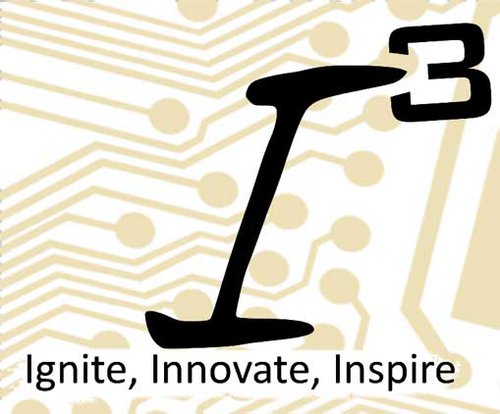Six faculty proposals at Emporia State University will share a total of nearly $8,000 from the Learning Technologies division of the university Information Technology department.
 The proposals — submitted for I3 (Ignite, Innovate, Inspire) mini grants — will all have an instructional designer from Learning Technologies assigned to help bring the projects to fruition.
The proposals — submitted for I3 (Ignite, Innovate, Inspire) mini grants — will all have an instructional designer from Learning Technologies assigned to help bring the projects to fruition.
In the past, Learning Technologies used its faculty development funds to present a formal workshop series. This year, the department decided to take a different direction, said Dr. Rob Gibson, Learning Technologies director.
“This is targeted professional development paired with instructional designer partners,” Gibson explained. “The I3 program requires a deeper exploration of technology relative to the curricular area. Partnering with instructional designers will ensure that sound instructional design concepts and principals are woven into the project outcomes.”
The six funded I3 projects are:
- Three-Dimensional Printing Technology, proposed by Patrick Martin and Roberta Eichenberg, Department of Art. 3D printing is becoming an important component for the art program. For example, a presenter used a 3D printer to illustrate some of his work. Dr. Anna Catterson is the assigned instructional designer.
- Evaluate, Distribute and Reflect with iEval: An Innovation in Pre-Service Teacher Evaluation App, proposed by Amanda Lickteig, Department of Elementary Education, Early Childhood and Special Education. The grant supports development of an application-based instrument to evaluate several components of pre-service teachers’ performances in classroom placements. Catterson and Joe Kern are the instructional designers.
- Video Enhancement of ESU’s Web-Based Earth Science M.S. Program, proposed by Dr. Marcia Schulmeister, Department of Physical Sciences. Coursework will be redesigned to leverage video resources. Project benefits from installation of lecture capture in earth science classrooms. Kern is instructional designer.
- Electronic Medical Record Conversion and Barcode Scanning at the Bedside in Simulation Labs, proposed by Gina Peek, Department of Nursing. Bedside documentation and bedside scanners for medication documentation will be added to simulation rooms. The additional equipment recreates an actual clinical setting and lets nursing students apply principles of informatics and technology in the clinical environment. Mark Summey is the instructional designer.
- Inspiring the Innovative Creation of Videos Using iMovie to Ignite Learning in the Classroom, proposed by Dr. Manjula Shinge, Teaching English as a Second Language. Students currently area asked to videotape themselves using innovative teaching strategies or to videotape their English learners engaging in novel activities or role plays. The grant would streamline and improve the process of creating and submitting the videos for viewing in the classroom. Summey is the instructional designer.
- Lightboard Technology, proposed by Tom Mahoney and Chad Wiley, Department of Mathematics and Economics. Expanding Lightboard technology already in place to provide a more engaging atmosphere for students to learn outside the classroom. Catterson is instructional designer.
In addition, the selection committee reviewed four other projects and determined they should be funded with monies allocated to Learning Spaces because they involve technology or software in the Learning Spaces area. They are:
- White Library Workshops Go the Distance, proposed by Terri Summey, University Libraries and Archives. Project would use installed lecture capture to pair live face-to-face class with online students at a distance. Mark Summey is instructional designer.
- Innovating Labs and Lounges for Small-Group Learning, proposed by Dr. Diane Nutbrown, Department of Physical Sciences. Project would use a Skyview Station to support expanding technology to innovated the shared instrument laboratory, student learning commons and instructional labs. Kern is instructional designer.
- Innovation for Expansion of Online Master’s Program, proposed by Rachel Spaulding, Department of English, Modern Languages and Journalism. Would add a Skyview Station and mobile equipment using Zoom, a video-conferencing service, to integrate online master’s level students into face-to-face campus class meetings in real time.
- Short Videos for Technology Training Using Camtasia, proposed by Javier Flores, School of Business. Videos to explain how to use software would replace step-by-step demonstrations written with lengthy text, including screenshots.
